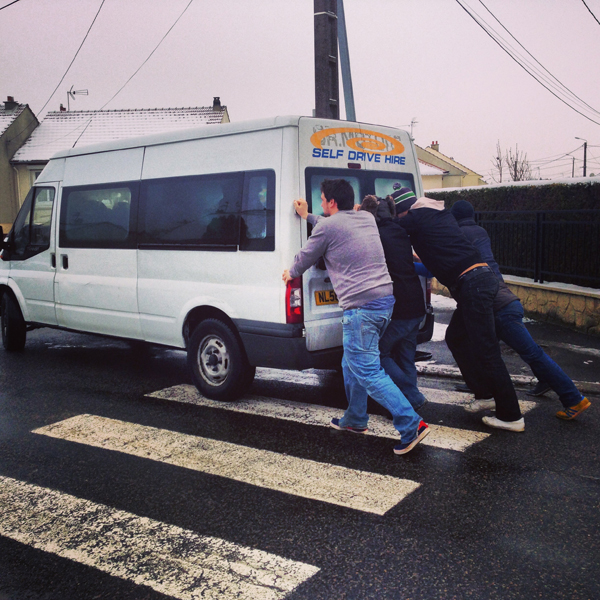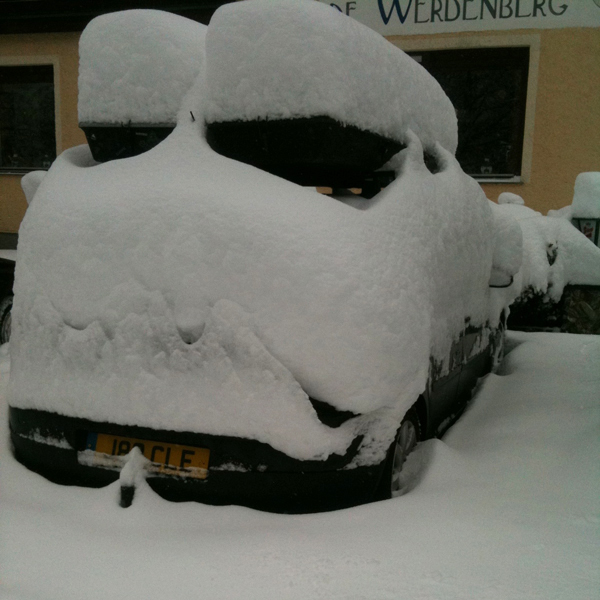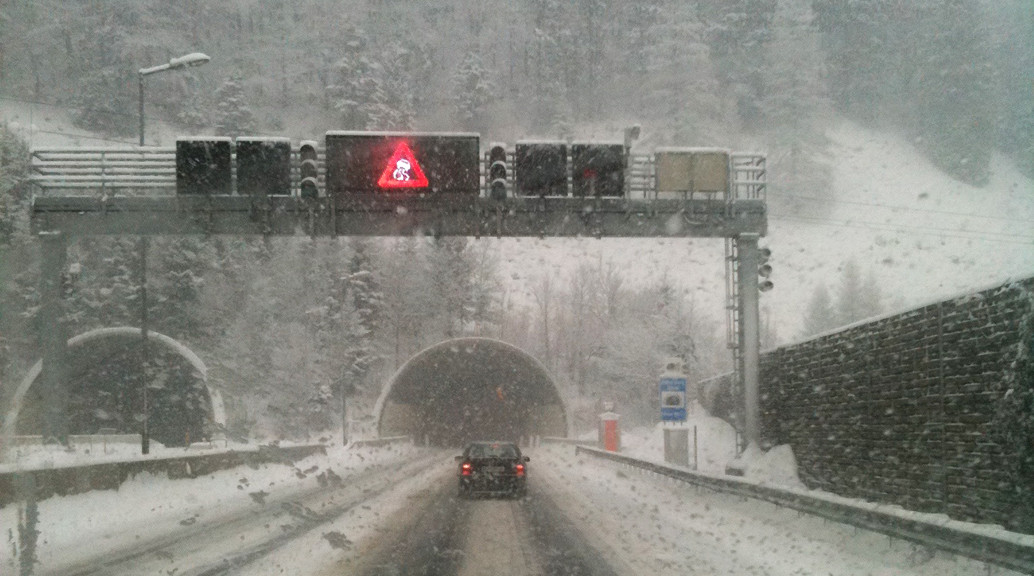It’s getting to that time of year again. Ski trips may or may not be booked or you may be going away as a large group and that question may be returning, “Should we drive to the alps this year?” My first thought when thinking about this subject is “ROAD TRIP……….”
When searching for flights, you can obviously find that bargain that everyone is searching for. Personally, I have found flights from Stansted to Salzburg for £70 return.
Flights are certainly cheaper but if you’re adding your skis and snowboards then it can be more expensive.
If you have the time available, and there are three or more of you, then the cost will always look more favorable to drive than fly. Also cars can carry another 75kg, of ski/snowboard gear, on the roof (with bars and a box) so it looks even more appetizing.
To break it down, the main costs involved are crossing the Channel, fuel and tolls or ‘tax vignette’:
Crossing the Channel
Whenever I have looked into the crossing DFDS Seaways have normally been the cheapest. They offer services roughly every hour from Dover to either Dunkirque or Calais. It can add on time though which is why the Channel Tunnel can be more accommodating.
Fuel
I have only taken diesel vehicles across and depending on where your final destination is, can normally do it from Calais in just over a tank of fuel. Fuel normally is also cheaper in mainland Europe, but always worth looking before you go.
Tolls or Tax Vignette
The French use ‘tolls’ across all their major roads going south which can add around €70 each way in costs. The Austrians impose a ‘tax vignette’ for driving which is normally around €15 for a week. Our friends, the Germans, are currently the only country that does not enforce a cost to use the lovely Autobahns – ya das its gut!
Other Costs To Consider
Depending on where your final destination is will also determine if you need any compulsory items that certain countries enforce, such as snow tyres, snow chains or breathalyzer kit.
Not going to go into too much detail here but these are important factors to consider for European driving:
Full original documentation must be presented if required; photocopies will not be accepted
Head light converters
Warning Triangle
GB Sticker or GB badge on number plate.
Bulb kit
Hi-Viz jackets; one must be assigned for each person in the vehicle, and make sure these are in the vehicle and not in the boot
France
Snow Chains must be carried in all vehicles from 1st November through to 31st March. When the snow gets heavy, the police will stop you and enforce they are put on
Breathalysers must be carried within the vehicle
Austria and Germany
Snow chains are not compulsory in Austria or Germany however snow tyres are, and all vehicles from 1st November must have snow tyres fitted
Driving
Obviously driving in Europe can be a lot different to that in the UK. The laws are different, the speeds are faster and the police can, and will, pull you over if your car doesn’t look like it will make the journey. As with any driving, always consider and look for your rest stops along the route. All the main roads I have driven on in mainland Europe always seem to be well kept with the services clean and tidy. Fuel stops are sometimes hard to come by as the roads are so long, so don’t be worried if you haven’t seen a fuel sign for at least a 1oo miles.

Pros:
You can take more kit; the only restriction is the size of your vehicle and how much kit you own
You ave the flexibility of a car when you’re in resort to go and explore areas
Cons:
More time consuming and can cut into your trip and potentially your ski time
Initial equipment costs such as snow tryes, snow chains, roof bars, roof boxes, etc
Routes I Have Personally Driven
Calais to Meribel (Le Troi Vallees)
A very simple route south. The towns of Saint Quentin and Dijon offer places to stop for the night. The hardest part will be the gentle mountain route up to Meribel. If it has been snowing at any point during the day then you can bet the Gendarmes will be out enforcing the use of snow chains. At the height of season, it isn’t uncommon that it can mirror the M25. Roughly 900 Km with a driving time of just under 10 hours.
Dunkurke/Calais to Flachau Ski Sportwelt Amade
Having worked in Austria for a couple of seasons, this is the route I have driven most. I would always recommend taking the slightly longer route through Belgium, The Netherlands and Germany when heading to Austria as it saves the Tolls through France. It will add around 25 minutes onto your journey, which in the grand scheme of things isn’t that much. The drive is pretty straightforward and once in Germany the speed can be picked up on the Autobahns. You may hit some traffic around Munich at any time during the day but then heading to Salzburg is easy. Just remember your Tax Vignette at the border. Roughly 1100 Km with driving time of just over 10 hours.
Calais to Morzine (The Portes Du Soliel)
Again a pretty simple drive. Straight off the ferry and it follows the same route as Meribel and all the other ski resorts. The differences being you need to turn off at Geneva to head up to the mountains. Geneva is a beautiful city if you get the chance to pop in or stay there. Roughly 800 Km with a driving time of eight and a half hours.

Things to Remember When Driving in Europe
Remember that Europeans drive on the “wrong” side, and its probably the most enforced as you get straight off the ferry or train.
Most of Europe shuts on a Sunday. A very important note to remember when driving. Apart from the main shopping centre’s and anything in a large holiday resort, everywhere does indeed close. Again, as the photo suggests, even petrol stations in local towns are closed.
European police can seem to be more heavy handed than UK Police. As long as everything is in check regarding your vehicle and what to carry than you have nothing to worry about. Although driving a UK plated vehicle does attract attention so beware!
When driving in Europe, it is the responsibility of the driver to enforce everyone is wearing seatbelts. The driver will be liable for a fine. Something I have found out.
Drink drive limits mainland Europe are higher with the fines heavier. My advice would be not to risk it at all. The French base it on how long you have been driving. E.g. if you have been driving for 3 years or less then the limit is 0.02%.
Devices that can detect speed cameras (Road Angel) are illegal in Europe.
Practice fitting snow chains back in the UK. It is not fun when it is minus 5, cars are whizzing passed you and everyone else is in the car nice and warm. A set of gardener’s gloves is always handy!
When leaving your car for a prolonged period in the snow. Pack salt or grit into the tread of the tyre. When you come to pull away it will give you just enough grip to get moving.
Keeping a shovel and a bag of soil (being serious) in the car is a definite. You never know when you will need to dig yourself out and packing soil just underneath the tyre can help you get out of deep snow.
For me, it’s a definite YES. If I have the option when looking at booking a trip to the alps then I will most certainly take the car across. However, I do understand that it isn’t for everyone and that flying across is a lot less stressful and can sometimes get you there faster.

